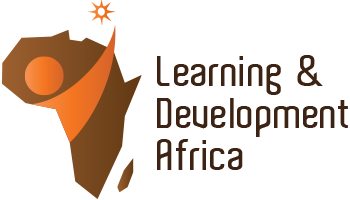
Hybrid Facilitation and the African Workforce: Lessons from the Field
By Dr. Patrick Baah-Acquah
“Learning is not the product of teaching. Learning is the product of the activity of learners.” — John Holt
Across Africa, Learning & Development (L&D) is being redefined. The post-pandemic era has ushered in a new standard, hybrid facilitation. It’s no longer a buzzword; it’s how we future-proof skills, scale leadership development, and ensure inclusive access to learning. As a certified IFC Online Learning Facilitator and TPMA-accredited trainer, I’ve had the opportunity to design and deliver hybrid training sessions across industries, from banking and finance professionals to grassroots women leaders with disabilities. And I’ve learned this: hybrid learning in Africa is both powerful and complex. Here are a few lessons I’ve gathered from the field. Hybrid Is a Mindset, Not Just a Model. It’s easy to think of hybrid as simply blending in-person and virtual attendance. But hybrid facilitation is about more than logistics, it’s a learner-first mindset. It asks: How do we keep both audiences equally engaged? Are we designing for interaction or just information transfer? The most effective hybrid sessions I’ve led felt like one united learning space, not two separate rooms. Tech Is the Bridge — Not the Solution. Let’s be honest: connectivity in many parts of Africa remains uneven. According to Groupe Speciale Mobile Association. (2023), only 28% of Sub-Saharan Africans had mobile internet access by the end of 2022. That figure tells us something: hybrid training must meet learners where they are. This means: Compressing resources for low-bandwidth environments. Using voice notes, PDFs, and even WhatsApp to keep everyone in the loop. Recording sessions and offering flexible access for asynchronous learners. Facilitators Must Lead with Emotional Intelligence. Hybrid facilitation demands a new type of leadership. You’re not just a trainer, you’re a motivator, moderator, and sometimes even tech support. One thing I always do: call virtual participants by name, check on how they’re doing, and create space for everyone to speak. It’s not just about knowledge, it’s about connection. While facilitating a recent EU-supported training in the Volta Region for women with disabilities, I saw the magic of local context. We used regional stories, visuals, and examples. The result? Deeper trust. Greater participation. Real transformation.
Hybrid learning only works when people see themselves in the content, not just the screen. You Can’t Improve What You Don’t Measure. Gone are the days of paper evaluation forms alone.
Today, I use: Real-time polls, Digital feedback tools, 1:1 post-session reflection. Feedback isn’t an afterthought; it’s a compass for improvement.
Today, I use: Real-time polls, Digital feedback tools, 1:1 post-session reflection. Feedback isn’t an afterthought; it’s a compass for improvement.
The Road Ahead
Hybrid facilitation in Africa holds immense promises but only if we approach it intentionally, inclusively, and insightfully. As we build Africa’s workforce of the future, let’s ensure no learner is left behind, not because of where they sit, but because of how we design. Let’s move from training to transforming. I’d love to hear from fellow facilitators, HR leaders, and L&D professionals: What has hybrid facilitation taught you? What’s working and what’s not?
